X
This article was co-authored by Halle Payne. Halle Payne has been hiking and backpacking in Northern California for over 3 years. She was Trip Leader for Stanford University’s Outdoor Education Program, Hiking Leader for Stanford Sierra Conference Center, and has taught classes in Outdoor Education and Leave No Trace principles.
This article has been viewed 34,281 times.
Even a short hike in the desert can be dangerous, especially if you're walking alone. You need much more water than you would in other environments, and you need to drink it frequently. Bring enough water to prepare for the worst. In an emergency, trying to find water is difficult and dangerous.
Steps
Method 1
Method 1 of 2:
Preventing Dehydration
-
1Know your water needs. Due to differences in climates and individuals, it's difficult to predict your exact needs. As a starting estimate, expect to sweat out 500–700 mL (17–24 oz) every hour while walking at 35ºC (95ºF), or 700–900 mL per hour of walking at 40ºC (104ºF).[1] Drink enough water to make up for this amount, and pay attention to your urine. If your urine is mostly clear, you are well hydrated. If it is dark or has a strong smell, you need more water.
- Aim for the lower range of this estimate if you are in the shade, and the higher range when walking in the sun. You will not need as much water while sitting.
- Most people underestimate the amount of water they need. Rely on solid measurements or urine color, not on how thirsty you feel.
-
2Bring along plenty of water. Bring more water than you need, in several containers. Store the excess back in your vehicle or shelter. If possible, store it somewhere away from direct sunlight, which can make water unpleasantly hot, and eventually wear down plastic containers.Advertisement
-
3Drink in swallows, not sips. Sipping water may prevent the water from reaching your vital organs. Drink at least a few swallows at a time to ensure effective hydration.[2]
- Drinking too much water on an empty stomach can lead to vomiting. If you think this may happen, start with a swallow or two. Wait a few minutes for your stomach to settle, then drink some more.
-
4Do not ration your water. Trying to save your water will just make the symptoms of dehydration set in sooner. Even in an emergency situation, drink enough water to stay hydrated whenever possible. Although drinking will trigger your body to urinate, most of it is water you would have lost anyway.[3]
-
5Include salt in your diet. You will also lose sodium and potassium as you sweat, which can decrease water retention and eventually cause serious health problems.[4] Snack occasionally on food that contains salt, as well as potassium-rich foods such as bananas, dried apricots, or nuts.[5]
- If your sweat does not taste salty, or does not sting when it falls into your eye, you need more salt.
- Salt only helps water retention if you are hydrated enough to take advantage of this effect. If you are dehydrated, large amounts of salt can make the problem worse.[6]
-
6Stay covered. Any exposed skin encourages perspiration due to rapid evaporation. Wear a hat and lightweight, long-sleeved shirt and trousers.[7]
-
7Seek shade in the hottest part of the day. In most deserts, especially in summer, conditions are brutally hot from about 10 am to 4 pm. One of the most effective ways to conserve water is to stay in shade during this time, away from wind. Do not exert yourself during this time.[8]
- In an emergency situation, walk during the night instead of the day.
-
8Eat less if you're running out of water. In an emergency, conserve water by eating as little as possible. You can survive much longer without food than water, and digestion takes water out of your system.[9]
Advertisement
Method 2
Method 2 of 2:
Finding Natural Water Sources
-
1Look for wildlife. Birds circling or making noise are often visiting a waterhole, or at least damp ground where you could dig for water. Flying insects are another promising sign, as are animal tracks heading downhill.[10]
- Bees in particular often fly directly between water sources and the hive.
-
2Dig near vegetation. In general, the greener the plant, and the wider its leaves, the more it needs a permanent water source. Digging near a promising tree or dense vegetation can sometimes lead to water.
- When digging, choose a low spot where water would naturally drain. Dig about 30 cm (1 ft) deep. If you notice damp soil, make the hole wider and wait a few hours for water to seep in.
-
3Dig in drainages. These are dry most of the year, but water may linger underground. The best option is a canyon with the mouth facing away from the sun (north in the Northern Hemisphere, or south in the Southern). Walk upstream and dig at the base of the wall, or anywhere that feels damp.
- In dry riverbeds, the force of the water may have eroded the outside bend of a river during a tight turn. The last flow of water may get trapped in an eroded depression here, so this is a good place to dig.[11]
-
4Dig at runoff points. These are sometimes difficult to identify without experience, but they're worth a try if you don't see anything else. The most promising features are slopes of hard, impenetrable rock, disappearing under the sand or soil.[12]
-
5Look for water pockets after a rain. Water and wind can wear holes into stone, which then fill with water after a rain. Isolated rock outcrops and level surfaces are the best places to look for these.
- In shady canyons or valleys, these pockets can stay full for days after a rainstorm, sometimes for weeks in a cool, sheltered area.
-
6Purify the water. Whenever possible, pour the water through a microfilter, or drop in purification tablets (such as iodine). That said, in an emergency, go ahead and drink it. Dehydration is more dangerous than waterborne disease, especially in a desert.
- Boiling water is even more effective, if you have access to a fire. All pathogens should be killed by the time the water reaches a boil, so no significant amount of water will be lost to steam.[13]
Advertisement
Expert Q&A
Did you know you can get premium answers for this article?
Unlock premium answers by supporting wikiHow
-
QuestionHow can you make water safe in the wilderness?
 Halle PayneHalle Payne has been hiking and backpacking in Northern California for over 3 years. She was Trip Leader for Stanford University’s Outdoor Education Program, Hiking Leader for Stanford Sierra Conference Center, and has taught classes in Outdoor Education and Leave No Trace principles.
Halle PayneHalle Payne has been hiking and backpacking in Northern California for over 3 years. She was Trip Leader for Stanford University’s Outdoor Education Program, Hiking Leader for Stanford Sierra Conference Center, and has taught classes in Outdoor Education and Leave No Trace principles.
Hiking & Backpacking Trip Leader Keep some form of water filtration in an emergency kit and bring it on all outings. There are lots of different types of water filters, from tablets and pills to filtrating straws. Pack the equipment for whatever method you like best into your emergency kit and make sure to take that whenever you go on any trip.
Keep some form of water filtration in an emergency kit and bring it on all outings. There are lots of different types of water filters, from tablets and pills to filtrating straws. Pack the equipment for whatever method you like best into your emergency kit and make sure to take that whenever you go on any trip.
Advertisement
Warnings
- Saltwater and urine do not hydrate you. However, in an emergency, you may use apply them to your skin and clothing. This will cool you down through evaporation, relying less on your own precious perspiration.[14]⧼thumbs_response⧽
Advertisement
Things You'll Need
- Lots of water
- Snacks that include salt and potassium
- Hat
- Lightweight, long-sleeved shirt
- Lightweight, long trousers
- Good hiking equipment.
References
- ↑ https://books.google.com/books?id=kUBxA5P7YbQC
- ↑ https://books.google.com/books?id=g0pXR2qylP0C
- ↑ https://books.google.com/books?id=kUBxA5P7YbQC
- ↑ https://books.google.com/books?id=g0pXR2qylP0C
- ↑ https://books.google.com/books?id=W41DCgAAQBAJ
- ↑ https://books.google.com/books?id=g0pXR2qylP0C
- ↑ https://books.google.com/books?id=W41DCgAAQBAJ
- ↑ https://books.google.com/books?id=kUBxA5P7YbQC
- ↑ https://books.google.com/books?id=g0pXR2qylP0C
About This Article
Advertisement
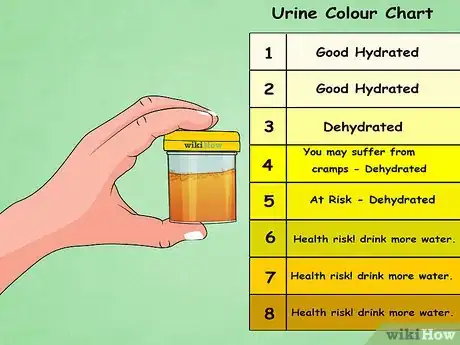
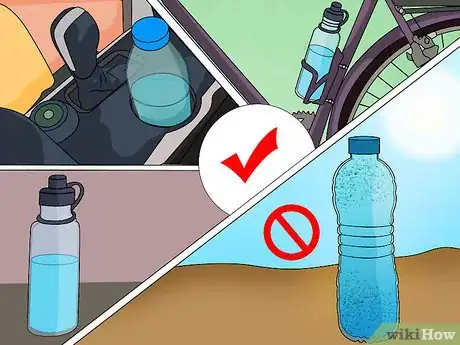
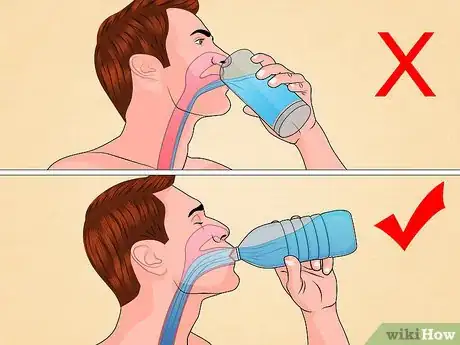

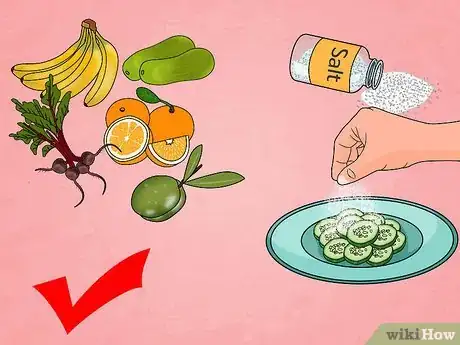
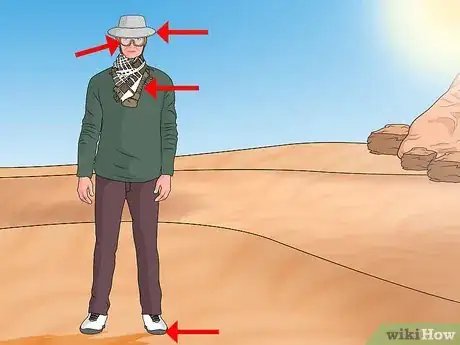
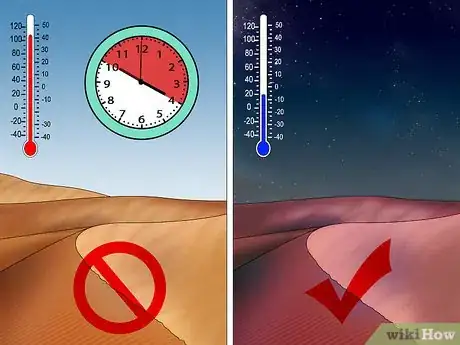
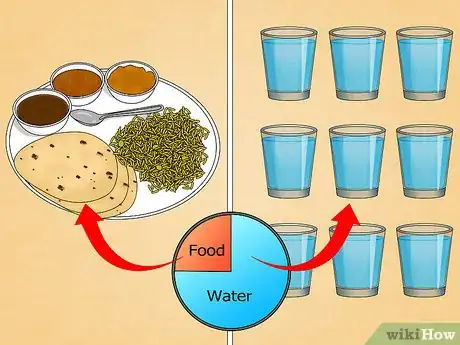

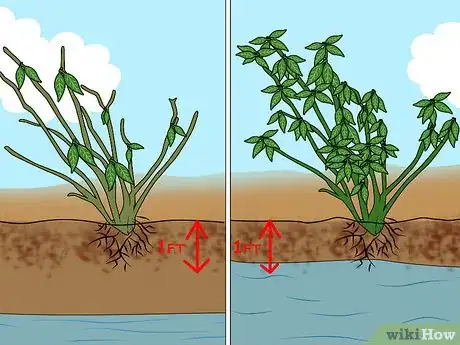

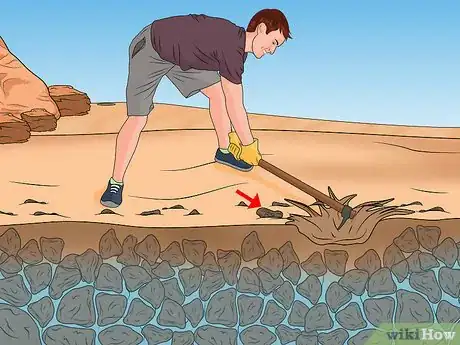
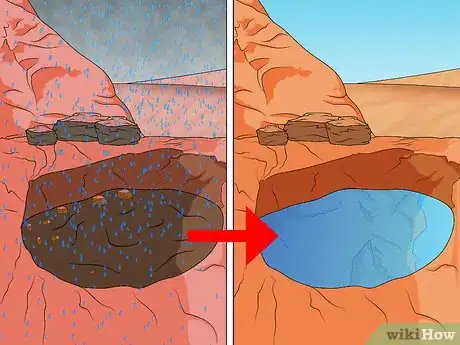

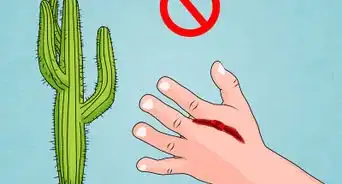
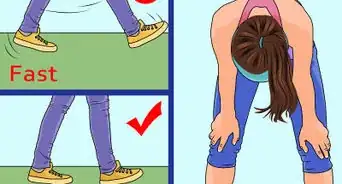
-Step-9-Version-5.webp)



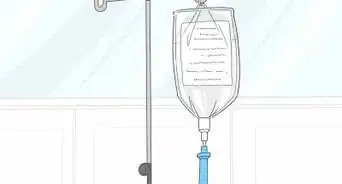








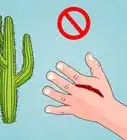
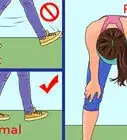
-Step-9-Version-5.webp)





































Medical Disclaimer
The content of this article is not intended to be a substitute for professional medical advice, examination, diagnosis, or treatment. You should always contact your doctor or other qualified healthcare professional before starting, changing, or stopping any kind of health treatment.
Read More...